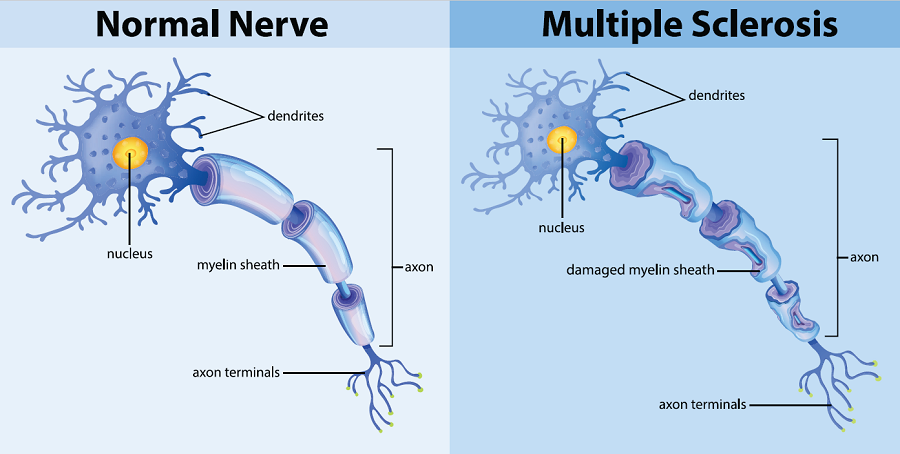How MS Affects the Brain
The Definition of Multiple Sclerosis
Multiple sclerosis is an immune-mediated disease, meaning an abnormal response of the body’s immune system causes the disease. With MS, the immune system attacks the central nervous system — which is made up of the brain, spinal cord and optic nerves — and creates an inflammatory response.People with MS typically experience one of four types of MS:
- Clinically isolated syndrome (CIS)
- Relapsing-remitting MS (RRMS)
- Secondary progressive MS (SPMS)
- Primary progressive MS (PPMS)
Results of the Immune System Attack
Typically, your immune system protects you from diseases and infections by attacking viruses and bacteria that get into your body. In MS, something triggers the immune system to attack the central nervous system.When a person is living with MS, their immune system attacks and damages:
- Myelin, the fatty substance that surrounds and insulates the nerve fibers
- Axons, long, threadlike parts of a nerve cell
- Oligodendrocytes, the cells that make myelin
- Damages or destroys myelin and oligodendrocytes
- Causes damage to the axons
- Produces damaged areas (lesions or scars) in the CNS (brain, spinal cord and optic nerves), which can be detected on magnetic resonance imaging (MRI)
- Slows or halts nerve conduction — producing the neurologic signs and symptoms of MS
